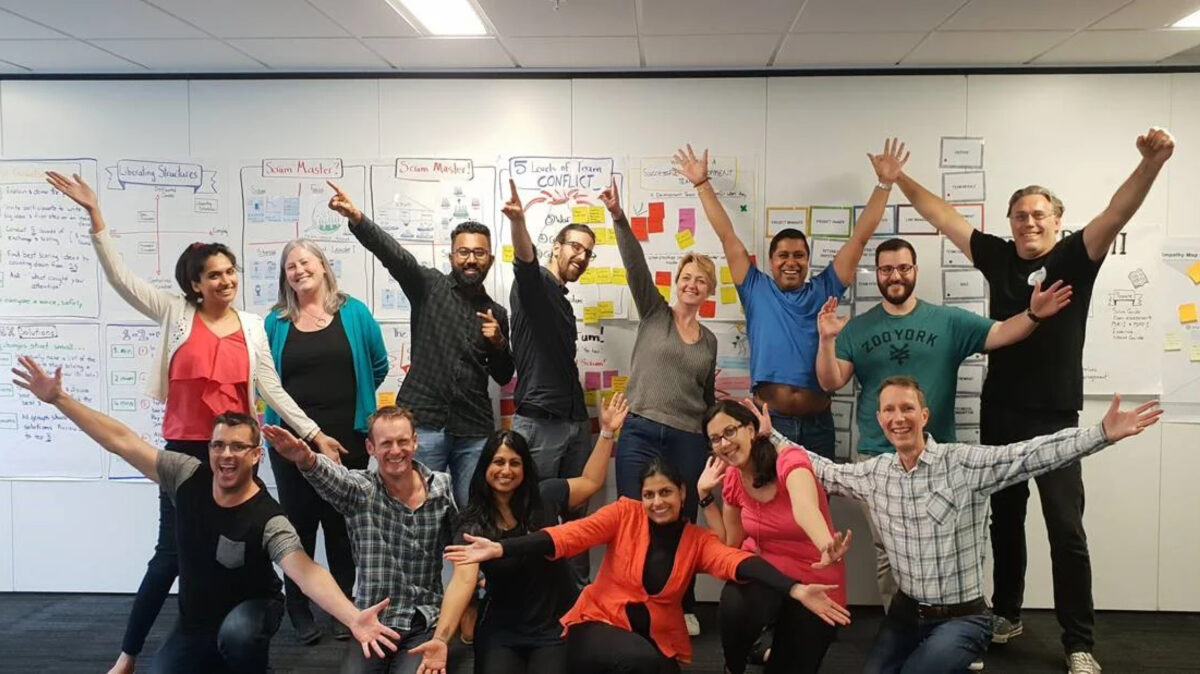We have all been in meetings that don’t seem to have any purpose. You attend because you were invited and felt you should go but find the purpose of the meeting isn’t clear and the meeting itself doesn’t create any meaningful outcomes. Sound familiar? The POWER start technique results in better meetings and better outcomes.
Meetings are an essential part of work, but poor meetings are a chronic waste and can drastically hamper organisational performance and agility. This post shows you how to use the POWER start technique to keep your meetings focused, meaningful and valuable.
In our Facilitation class, we teach a technique called the POWER start. It is a simple framework, originally created by the Agile Coaching Institute to help keep meetings focused, well planned and delivering quality outcomes.
The POWER acronym stands for :
- Purpose – what is the overall purpose of the meeting? Why is it necessary?
- Outcomes - what outcomes do you aim to achieve in this meeting?
- WIIFM – What is in it for the attendee? Make it clear why they should attend. One useful approach is to make it clear what they will miss out on if they don’t attend.
- Engagement – what techniques will you use as a facilitator to keep the participants engaged?
- Roles and responsibilities – who is going to do what in the meeting? Are you facilitating? Do you need a scribe?
How to use the POWER start technique
The POWER start helps you plan, structure and run your meeting effectively. Here is how it works. In this example, we use our simple template (download here).
Purpose
Write out the purpose of the meeting in one simple paragraph. Try to use no more than three sentences and use plain language. The point here is to make it crystal clear on why the meeting is needed and the general topic of what will be discussed. Make it clear if you intend on making a decision at the meeting.
Outcomes
What are the key things you want to achieve in the meeting? What will be the result that occurs from people attending this meeting?
It is critical to get this part right. People typically avoid meetings because they don’t see value in them. You need to address this by painting a very clear picture of the intended outcomes and the benefit of them attending. Otherwise, why should they care?
WIIFM
People will not attend meetings if they can’t relate the meeting to something that is important to them. Obviously, this is not what you want.
Start by thinking about what your attendees are trying to achieve and how this meeting relates to that. What’s important to them? What might they want to get from the meeting? By taking a few moments to map this out, you can achieve a significantly better outcome.
Engagement
Engaging meetings don’t feel like meetings. They draw you into the topic and encourage healthy participation. To achieve engagement, you need to prepare well.
We work off a simple rule of thumb – for every hour of meeting you need one hour of preparation.
Sounds like a lot of effort, right? Yes, it is more effort, but what we are after here is quality over quantity. Think about it his way.
If you have 7 people at a meeting, and their average hourly cost is $100 per hour, that is $900 (including you). If that meeting fails to reach a quality outcome, there will likely be a lot of extra emails, phone calls and discussions required. You might even need another meeting. The cost of that can be significant. If you spend one hour preparing for the meeting, the maximum cost of that is one hour of your time - $100.
To create engagement, design activities to help achieve outcomes. For example
- to rapidly engage everyone to create ideas: 25/10 crowdsourcing is a great technique
- if you would like to vote on a series of options, dot voting is a powerful technique.
- to generate quality ideas, faster than before and include everyone, 1-2-4-ALL is a great technique.
One critical consideration when planning the meeting is whether there is any information you would like attendee to read in advance. This might be a report or similar background information.
Finally, make sure you have the agenda displayed, with timings, in an easy to read, graphical format. This will help you keep everyone focused and on schedule. A flip chart is ideal. You may also choose to share the agenda in advance.
Roles & Responsibilities
Finally, consider the roles and responsibilities of the attendees. Are you facilitating the meeting? If you need to participate in the content of the meeting then it might be better to engage a facilitator. Who will be capturing actions and outcomes? Are there any subject matter experts required? Who will contribute? And who will schedule any follow-up meetings required? These all are important before, during and after the meeting.
Conclusion
The POWER start is an excellent way of making meetings powerful, engaging and fun. Over time you will find people want to attend your meetings as they deliver results in a collaborative, engaging way. And by achieving clear outcomes you may even be able to reduce the number of meetings your organisation needs.
POWER starts are one of the techniques we teach during our amazing Agile Team Facilitation course. We also help attendees learn how to work with difficult behaviour, how to facilitate for full participation and how to work as a servant leader to help guide your team to quality outcomes. We would love to see you on the next one.

